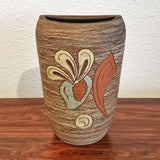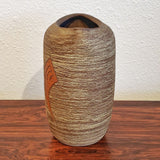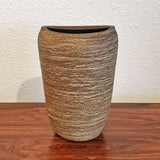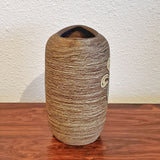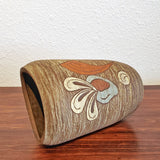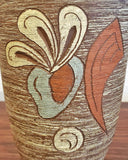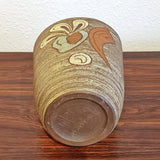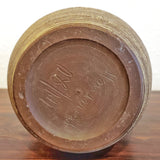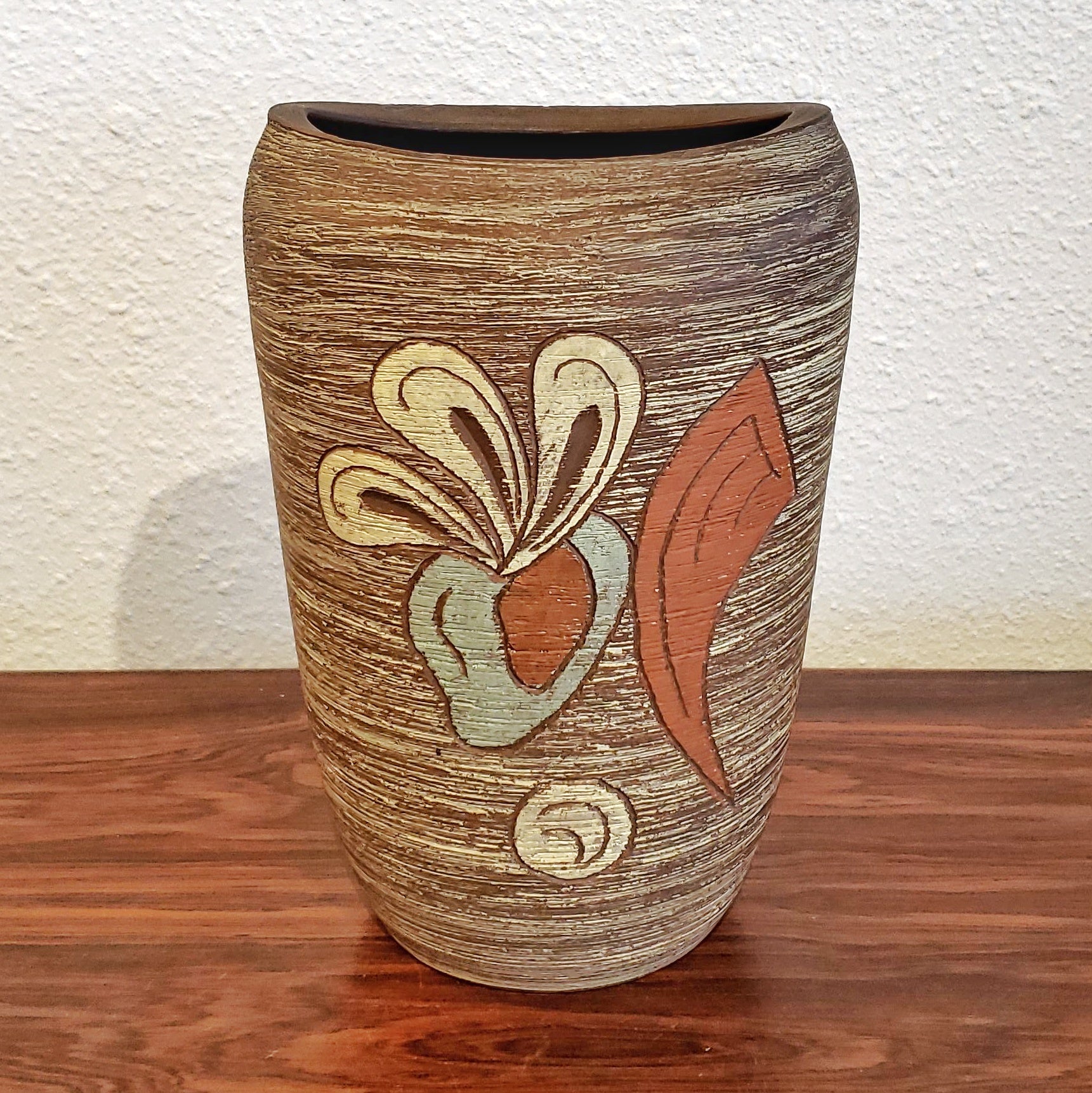
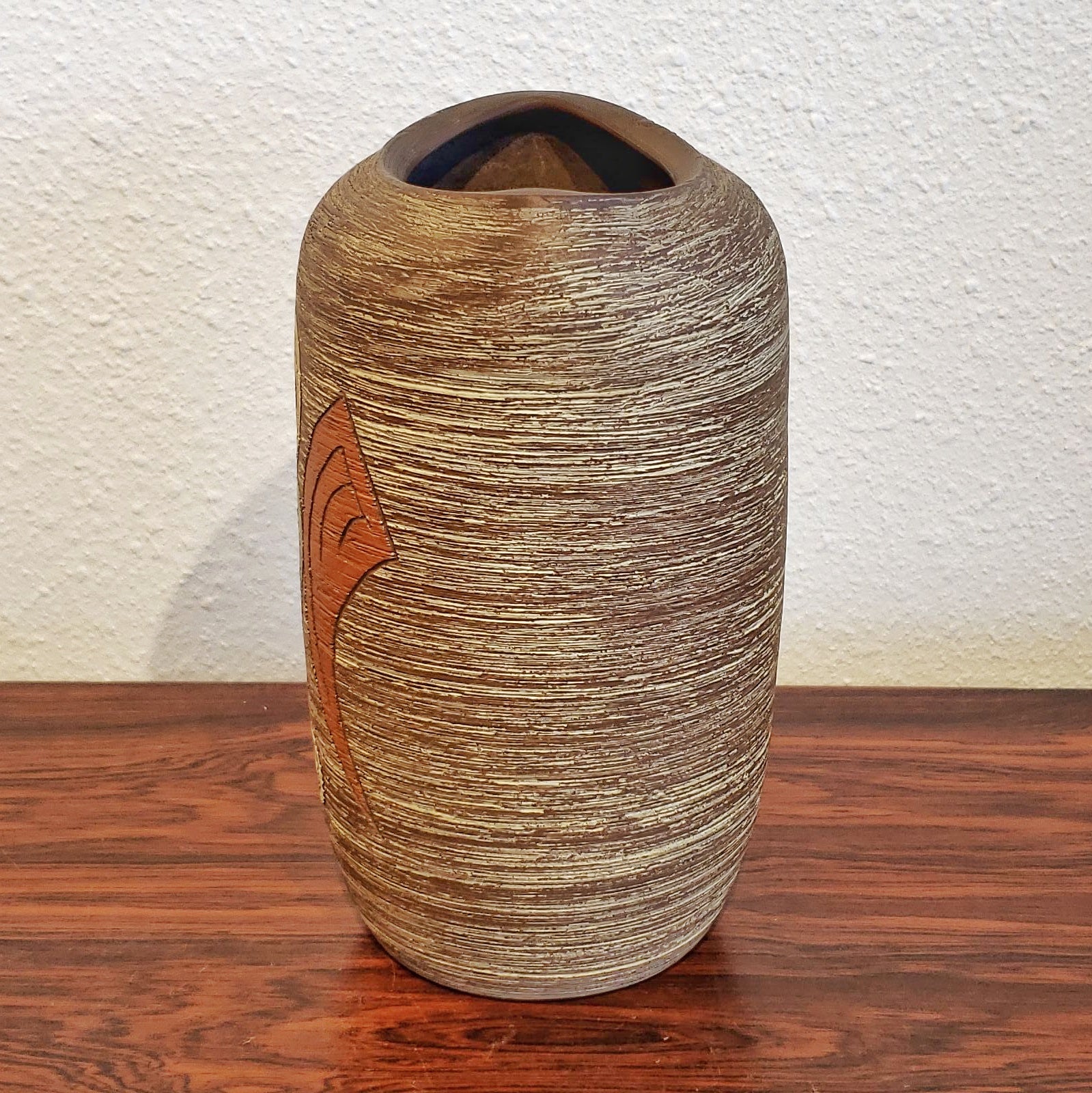
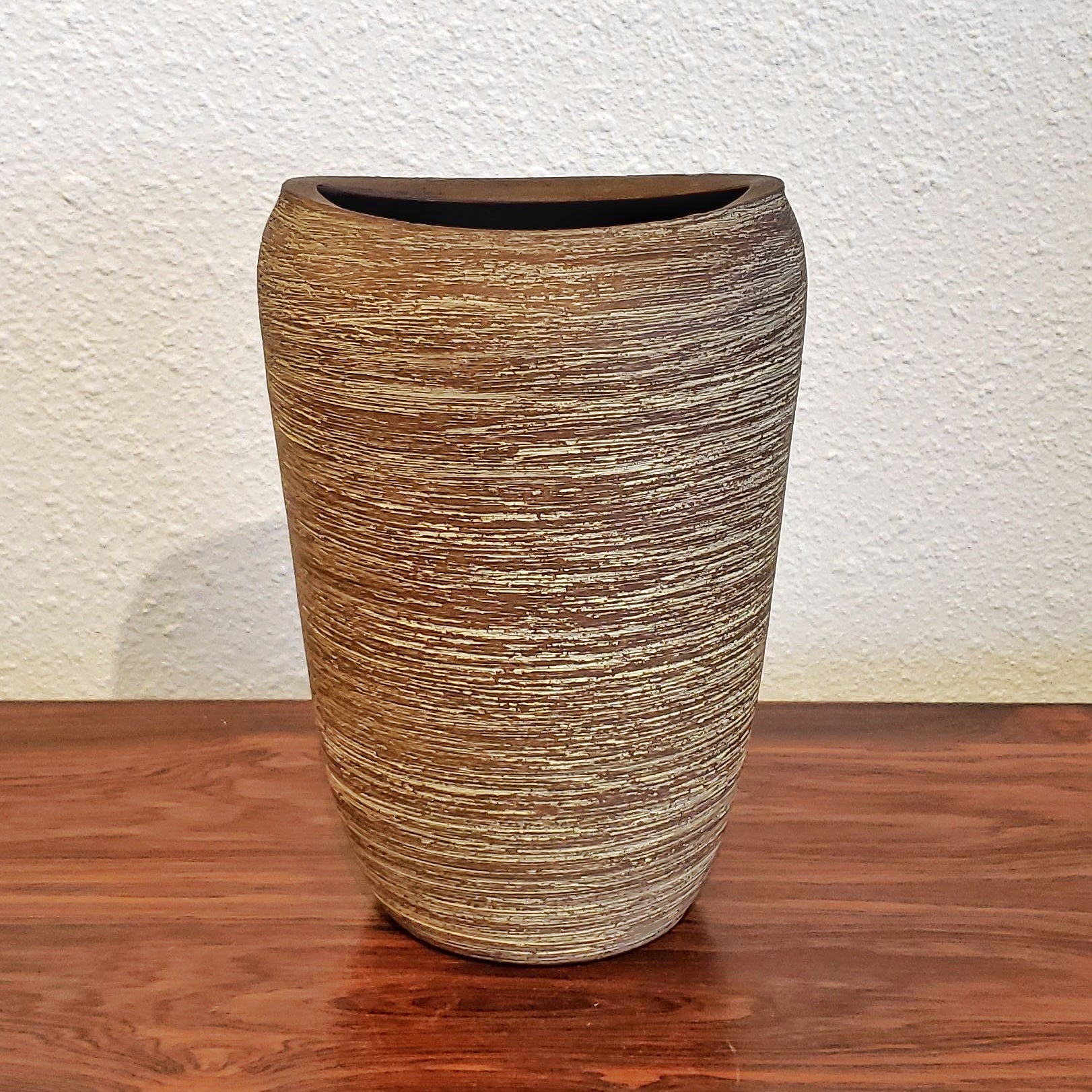
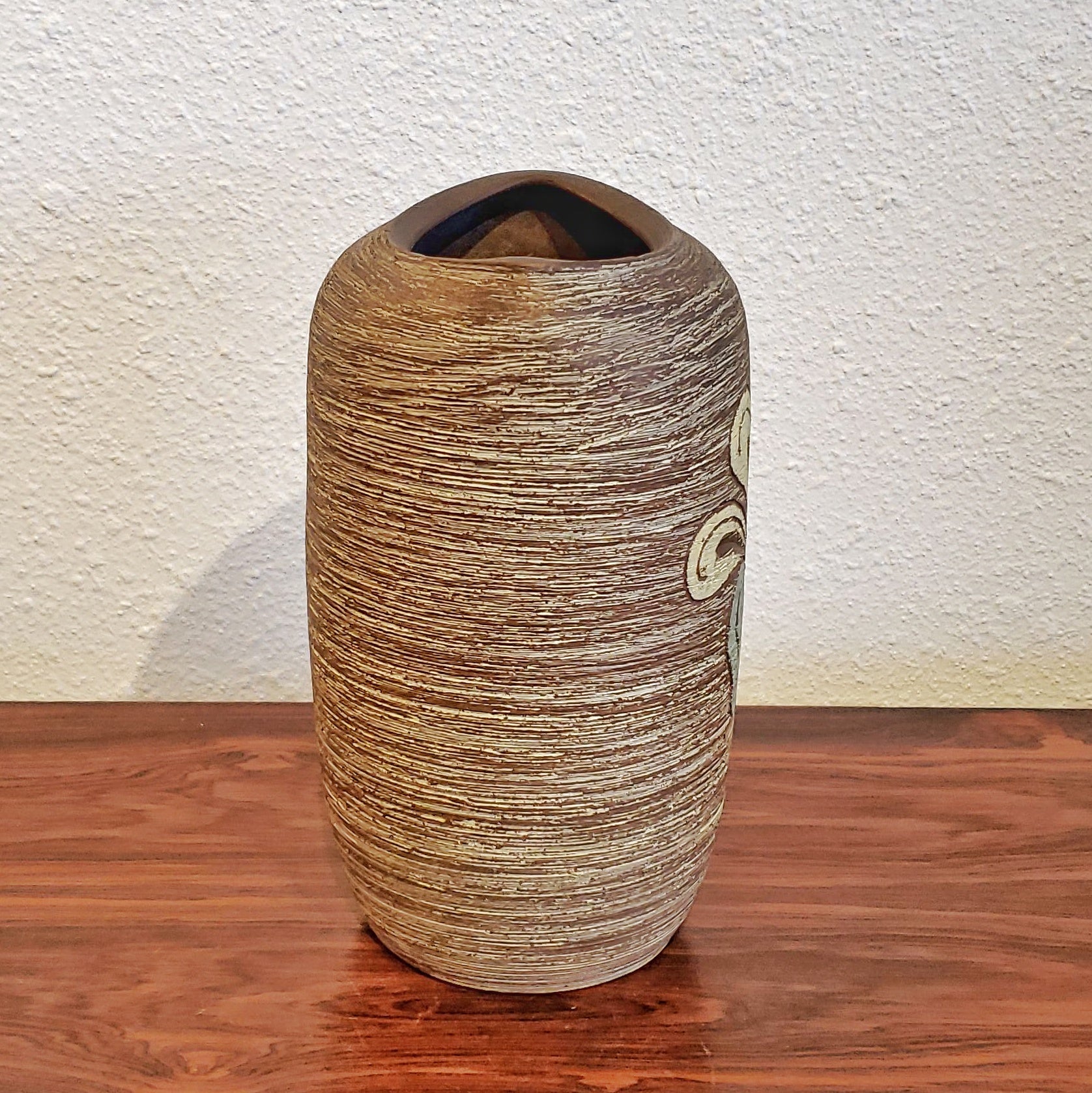
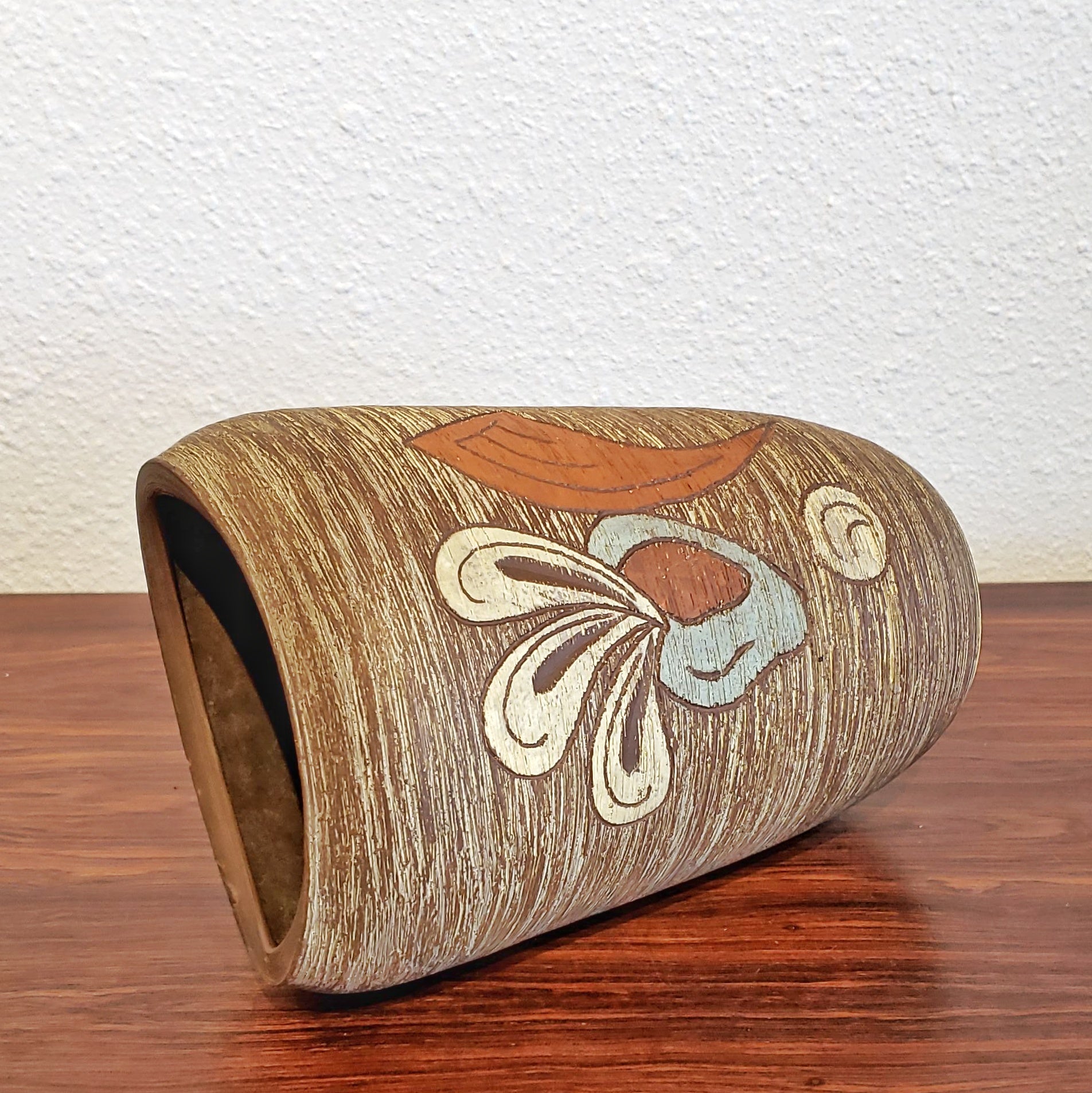
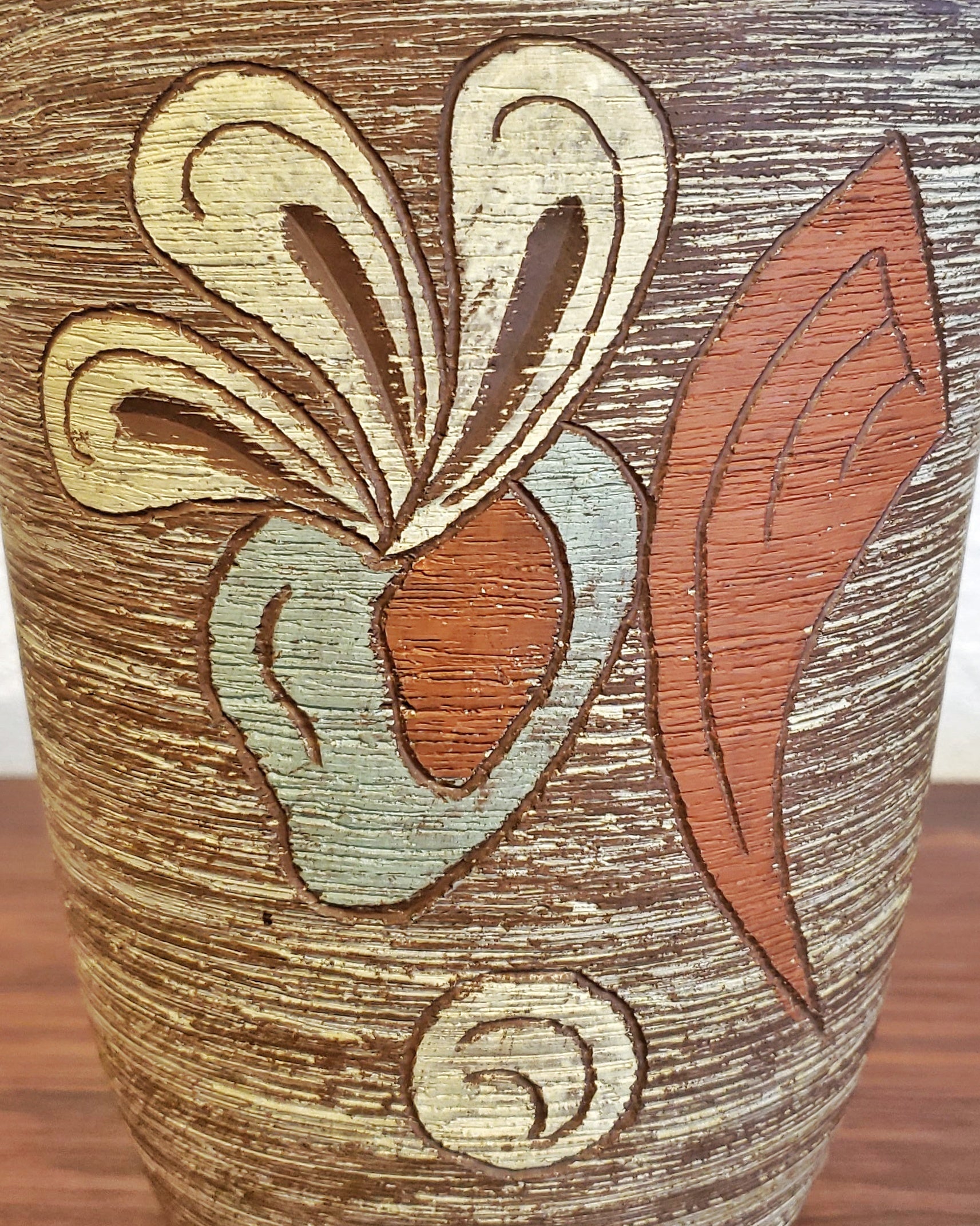
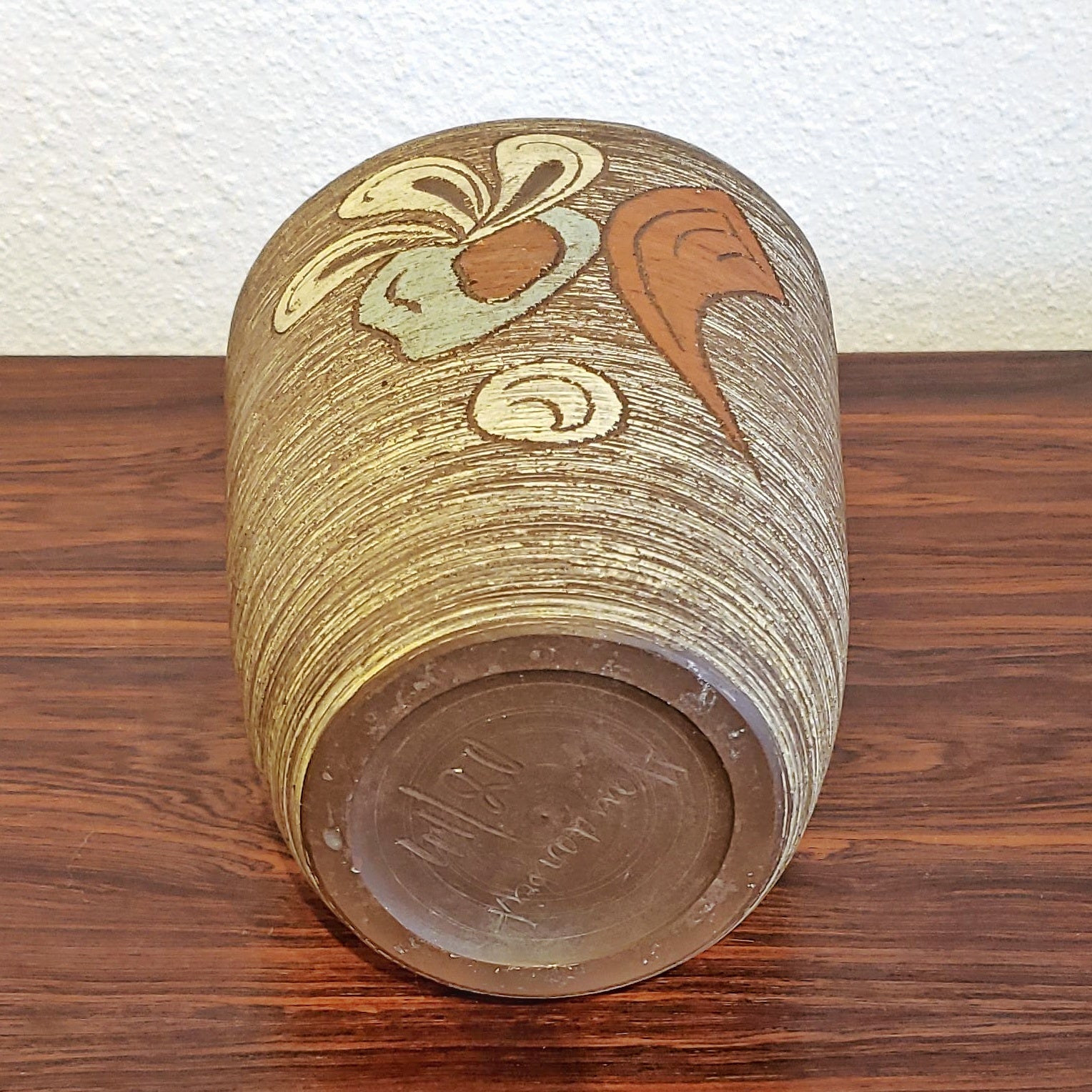
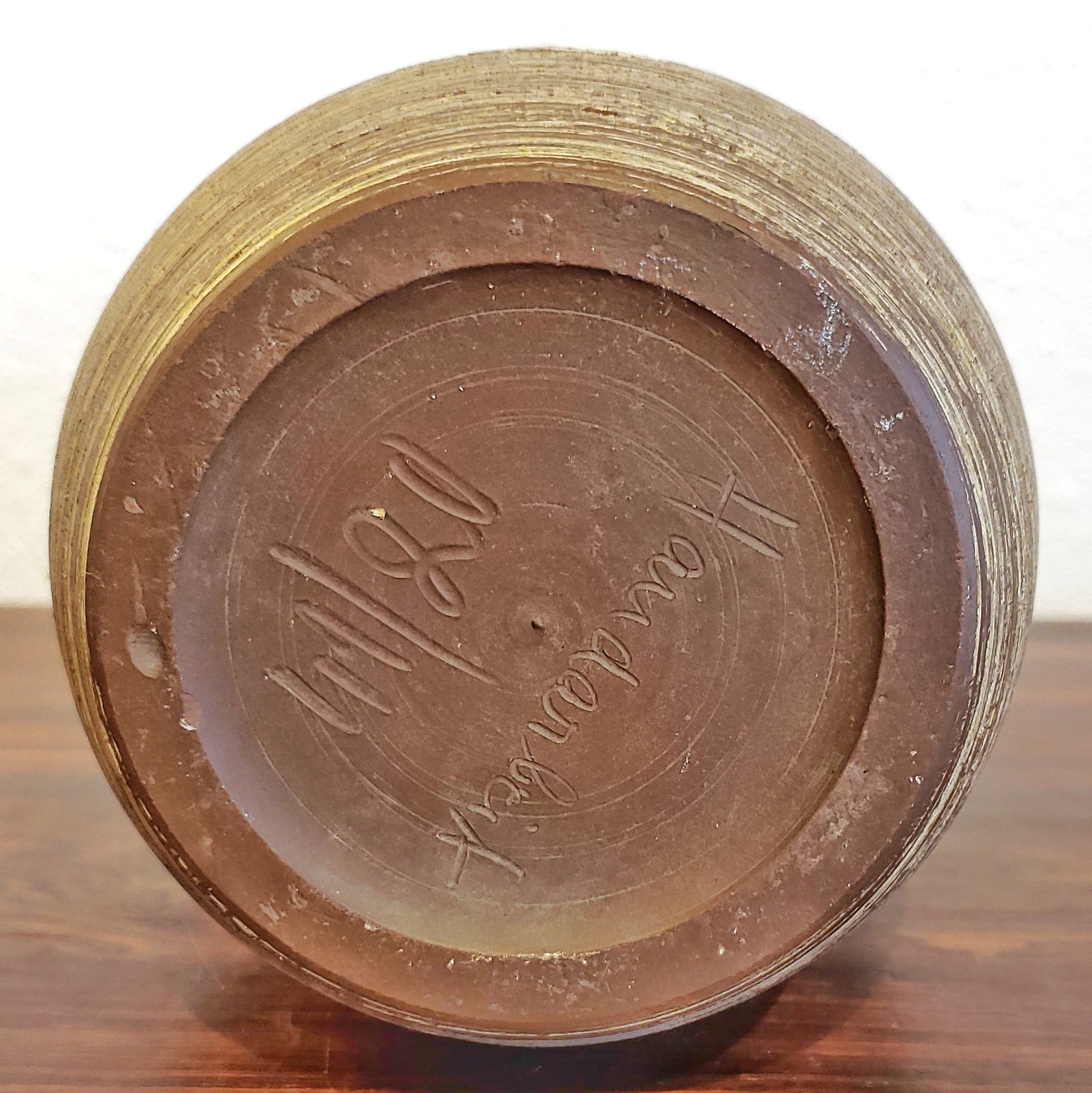
SIERSHAHN KERAMIK “KLINKER” VASE Nr. 41/20
CONTACT US HERE ABOUT THIS ITEM.
A decorative, '60s-era klinker vase with an abstracted still-life décor from the SIERSHAHNER FEINSTEINZEUGFABRIK factory of West Germany. The pinched form rises to an oval rim from a circular foot. Fine horizontal “scratches” are highlighted by the overall application of a pale, khaki-colored stain. Marked on the base with form Nr. 41/20 and the designation “Handarbeit.”
SIERSHAHNER FEINSTEINZEUGFABRIK GmbH was established as a division of Übelacker Keramik (aka Ü-Keramik) in 1949. Operations in Siershahn commenced with a total of 16 highly skilled employees, most of whom were ethnic German refugees from the town of Bunzlau, who were expelled from Lower Silesia with its transfer to Poland following Germany's defeat in WWII. A year later the count had risen to 160, along with the demand for the factory's output. First producing fireproof stoneware and tableware in the Bunzlau style, a sister branch was added in nearby Mogendorf in 1952, employing another 50 workers and firing “klinker” ceramics. That same year, SIERSHAHNER wares were presented for the first time at the industrial fair in Hanover; included were vases and other ceramic containers in four basic décor variants: Natural Klinker (made of natural brown clay), Capri (glazed a matt gray) Cuba (frosted beige and cloudy yellow), and Tirol (frosted green and flocked white).
The entire Übelacker venture remained quite successful through the post-war period up until an overseas investment in the 1980s turned into a financial debacle that left the family struggling with debt. The factories in and around Siershahn had to be closed as a result. Finally, in 1990, the main plant in Ransbach-Baumbach filed for bankruptcy.
KLINKER POTTERY takes its name from a particular sort of partially-vitrified brick, commonly referred to as “klinker” or “clinker,”—so-called because of the metallic sound produced when klinker bricks are struck together. Like its namesake brick, klinker pottery is hard-fired at unusually high temperatures. Typically hand-thrown, it is also often decorated or burnished by hand—and only partially colored, if at all, using special dyes. These production methods tend to make klinker items very water-resistant, and in most cases, waterproof, even without interior glazing. (Incidentally, being denser than normal bricks, klinkers provide relatively poor insulation. On the other hand, their hard surfaces make them frost-resistant, so they are well-suited for use in facades and as pavers. Early klinkers were simply the accidental byproducts of brickmaking.)
DETAILS
Designer – UNKNOWN
Design Period/Year – 1960s
Maker – SIERSHAHNER FEINSTEINZEUGFABRIK
Production Period/Year – 1960s
Origin – WEST GERMANY
Styles/Movements – ABSTRACT; BOHO CHIC; MID-CENTURY MODERN
Materials – EARTHENWARE
Colors – BROWN, WHITE, BABY BLUE, TERRA COTTA
Condition – Excellent vintage condition.
Dimensions – 5 ¼" W × 4" D × 7 ¾" H

